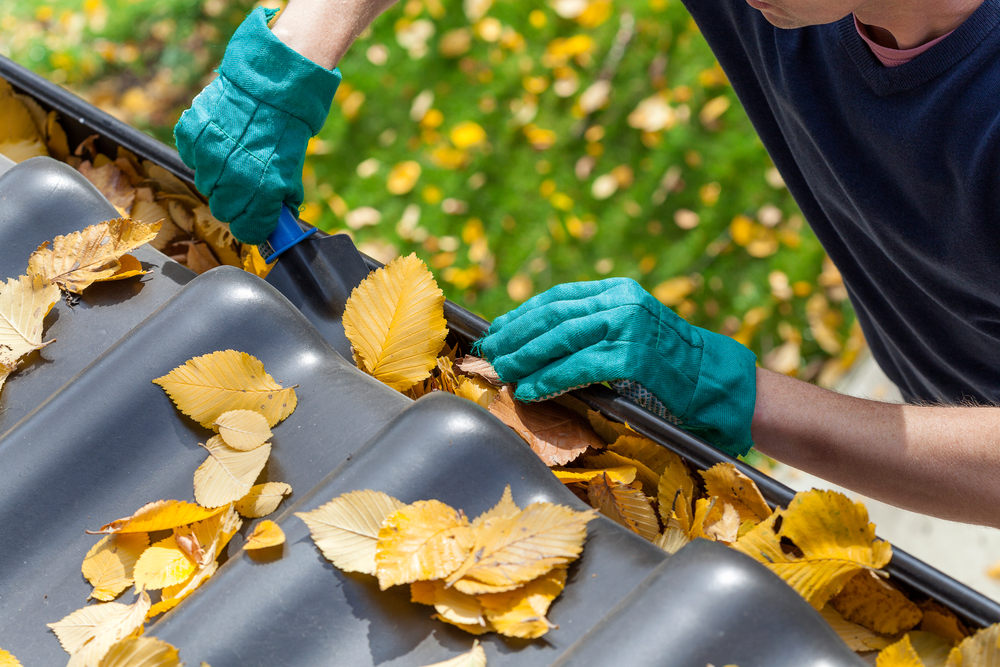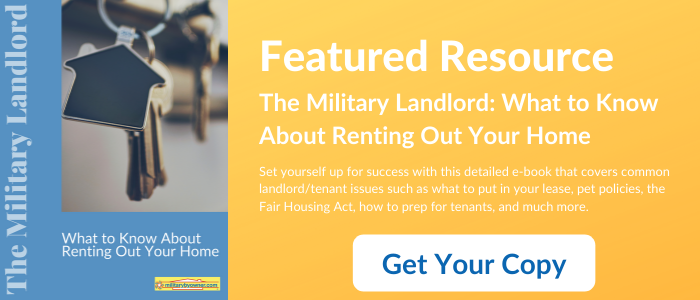11 Essentials for Your Rental Home Binder
Landlords, did you know military renters love when they walk into a well-kept home with an organized rental binder in plain sight? It indicates that you’re invested in the property and are securing a positive relationship with them for the lease term.
If you haven’t started a binder yet, it can be as simple as a file folder or as elaborate as a colorful Etsy shop purchase, complete with three rings, pockets, and plastic sleeve protectors. Or, if you prefer, search for an app that allows you to upload the necessary documents. What’s important is the information found inside.
If you add these 11 essentials, you’ll alleviate your renters’ worries and help yourself with property upkeep on your rental, as well as save a significant amount of time on back-and-forth communication, as you’ve already compiled the answers in a neatly organized binder.

1. Landlord’s Communication Information
Sometimes it’s challenging to find a military landlord in an emergency, especially if they’re an active duty service member who doesn’t have their phone accessible all day. If you have a preference for how tenants should communicate with you for maintenance requests, let them know.
Also, leave your tenants multiple ways to contact you:
- Cell number
- Home phone
- Work number
- Spouse’s contact information
- Property manager info, if applicable
Get ready for landlord life: 7 Common Issues Landlords Face and How to Tackle Them.
2. Key Collection
Security professionals recommend that landlords re-key the locks before each tenant moves in, so be sure you have the current keys for the main doors.
But you also should share the other important keys for:
- Secondary doors
- Deadbolts
- Shed/garage
- Mailbox
- Fence
- Neighborhood pool key or pool fence key
3. Household Manuals
If your tenants feel prepared to take on regular maintenance and troubleshoot everyday issues that pop up, you’ll field fewer phone calls and pay fewer maintenance fees for property upkeep on your rental.
Have the manuals available in the binder for:
- Appliances: laundry, kitchen, HVAC, sump pump
- Thermostat
- Garage door
- Security system
- Fire, smoke, and carbon monoxide detectors
- Special cleaning instructions, like for hardwood floors or granite countertops
- Septic system
4. List of the House’s Quirks
Every house has a couple of quirks, but you’ll have to clue your tenants in so they know how to use the unique door lock system or show them the exact shimmy needed to open the finicky windows.
Also include:
- Sensitive plumbing practices
- Access to the attic and crawlspace
- Dehumidifier in the basement
5. Pictures of Important Features
When an emergency occurs, it can be challenging to identify the source. If your tenants know where to look, they can minimize the damage.
Include photos of:
- Main water turnoff/on valve
- Electrical box
- Gas line switch
- Fire extinguishers
 Photo by Shutterstock
Photo by Shutterstock
6. Home Maintenance and Upkeep Schedule
Renters won’t know when you last cleaned the ducts or when the furnace filters were changed. A month-to-month guide providing dates for home upkeep chores helps mitigate big problems, such as burst pipes in January.
Make note of:
- Power washing
- Seasonal lawn care
- Septic system maintenance
- Gutter cleaning
- Chimney sweep
- Winterizing outside pipes and sprinkler systems
- Refrigerator filter replacement
- Smoke and fire alarm battery changes
7. List of Trusted Vendors
Whether you manage the repairs yourself, hire a contractor, or have a home warranty, your tenants need to know who to contact with the account and their phone numbers.
If you’re a long-distance landlord, you might consider setting up accounts with important vendors before your tenants arrive in case of an emergency.
- Home warranty
- Plumber
- Electrician
- Contractor
- Handyman
- Pool and lawn service
8. Touch-Up Repair Supplies
If you require your tenants to patch nail holes and repaint, then leave them your exact instructions, along with the products and matching paint you want them to use.
Don't forget to include:
- Suggested drywall patch/filler products
- Paint colors and numbers
- Where to buy the paint
 Photo by Shutterstock
Photo by Shutterstock
9. Trusted Neighbors and Friends
In a bind, especially if you don’t live locally, a willing friend or neighbor can be a lifesaver for your tenant. Provide them with alternate contact information and offer your support.
- Phone numbers
- Spare house keys
10. Neighborhood Information
The more neighborhood information you can share, the faster your tenants will settle in and enjoy your home.
- Popular coffee shops and restaurants
- Community events calendar
- Local pool, tennis, and golf memberships
- Neighborhood associations
- Homeowners Association
11. Miscellaneous Items
If you have any additional information you’d like your tenants to be aware of, add it to the binder. Even if they don’t use it, future tenants might. Adding a welcome letter is a nice touch, too.
Consider including:
- Copy of the lease
- Lead paint inspection certificate
- Information on fire safety, how to avoid pest infestation
- Your state’s landlord/tenant laws
- Trash collection dates
- Internet and cable connection
As a landlord, you don’t want to overwhelm renters with too many details of the house that aren’t their responsibility. So, pick the points you think are most important and ask them to refer to the binder periodically to stay ahead of the upkeep at home. You can also inform them that you’ll send occasional emails to remind them of important dates and upcoming maintenance.
Landlords, don't miss MilitaryByOwner's thorough, free guide below.





